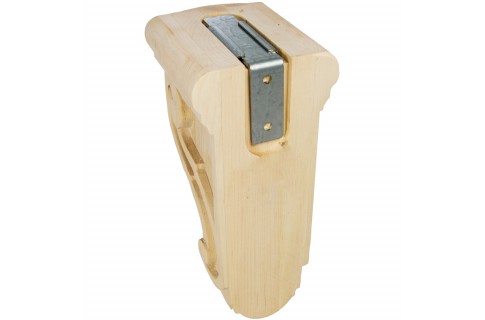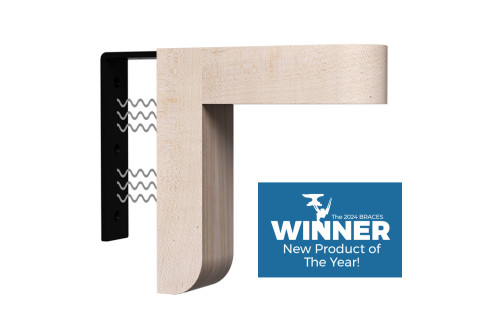Point Load vs. Uniform Distributed Load
As the market leader within the surface support industry, carrying capacity is something we continually consider. When developing new products, carrying capacity and the related factor of deflection are foremost in our thinking. Of course, there are many characteristics to the force applied on a bracket. Those characteristics have an equal number of influences on the resulting deflection. All loads will cause some amount of deflection, but distribution of that load can greatly impact how much deflection occurs. This resource will show how load placement can affect deflection and overall carrying capacity. It will also reference how to plan for this in certain applications.
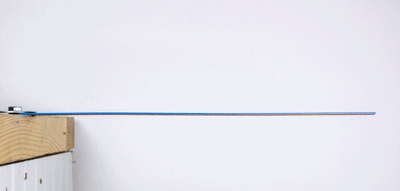
There are two main load types that are most common when determining deflection of a support brace: Point Load (PL) and Uniform Distributed Load (UDL). The examples following will be based on supports with one fixed end (cantilever beams).
Point Load
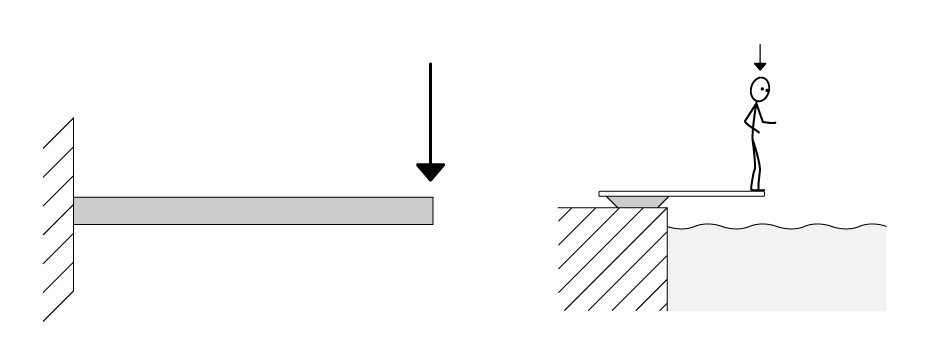
A point load is a force that is applied to a concentrated point on the support. An example would be a person standing at the free end of a diving board.
Uniform Distributed Load
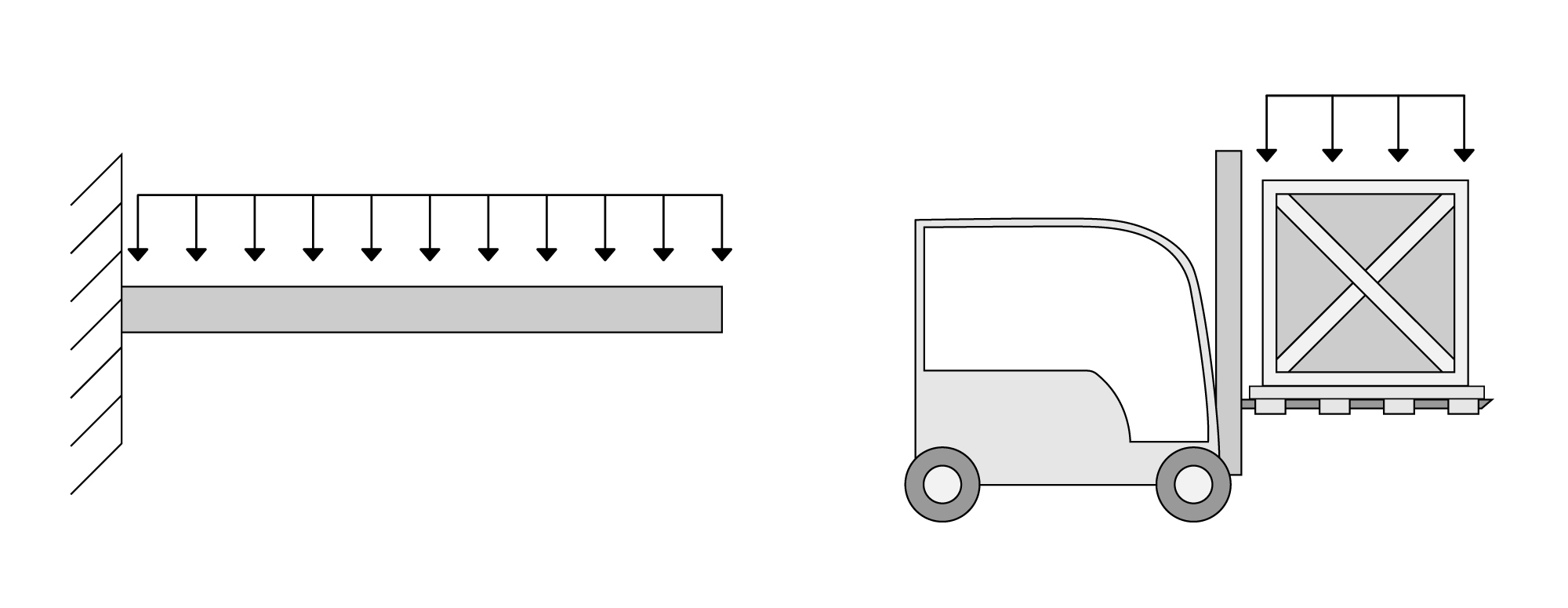
A uniform distributed load is a force that is applied evenly over the distance of a support. For the least amount of deflection possible, this load is distributed over the entire length of the support. An example would be a shipping crate on a forklift.
In construction, UDLs are preferable over point loads. Under an evenly distributed load the possibility of a support bending and/or failing are significantly reduced when compared to a point load situation. Concentrated loads are more likely to cause bending. Below are images of a real life experiment of both load types mentioned as well as load placement, showing how those factors affect deflection.

The cantilever used in this experiment is a simple metal ruler that is fixed on one end to support structure. Evenly weighted magnets were used to represent load types on the ruler. This is a simple way to show visual changes in deflection.
PL - Free End
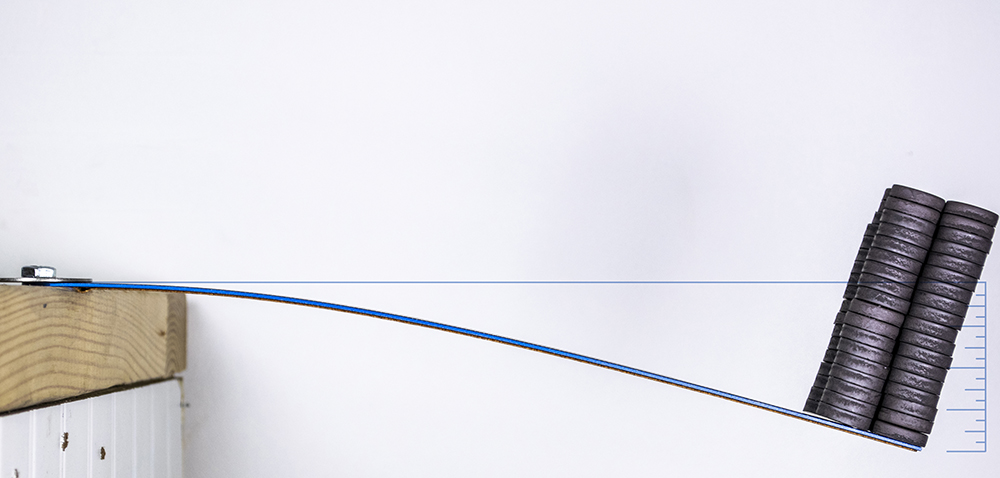
The illustrated placement of a point load at the free end of the cantilever will cause the most deflection out of all the configurations shown. There are not many instances where you would want to place your heavy load at the furthest end of your support. An example of when this may occur would be a person leaning or sitting on the edge of an overhanging bar counter.
PL - Middle
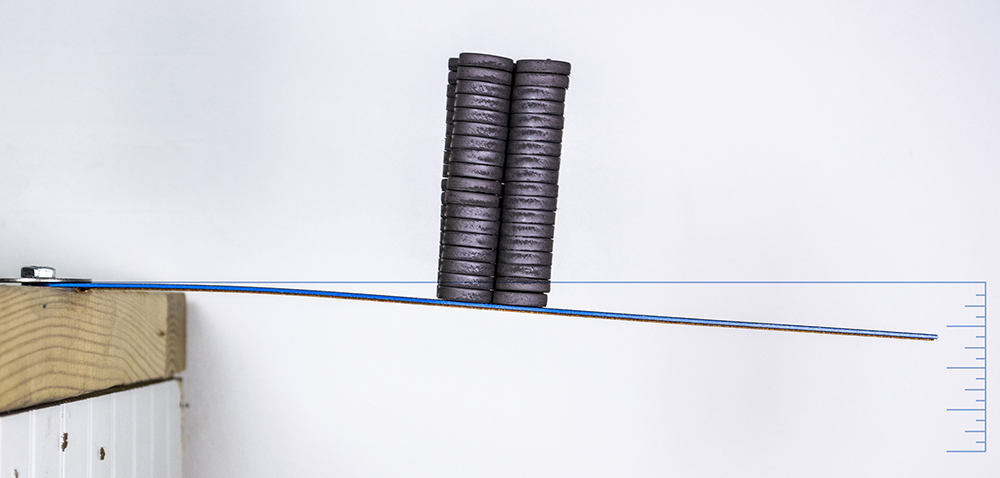
As illustrated in this image, a point load placed at half the distance of the support actually results in about ⅓ of the max deflection resulting from the point load at the free end. This shows that as you move the PL closer to the fixed end, deflection decreases exponentially.
PL - Fixed End
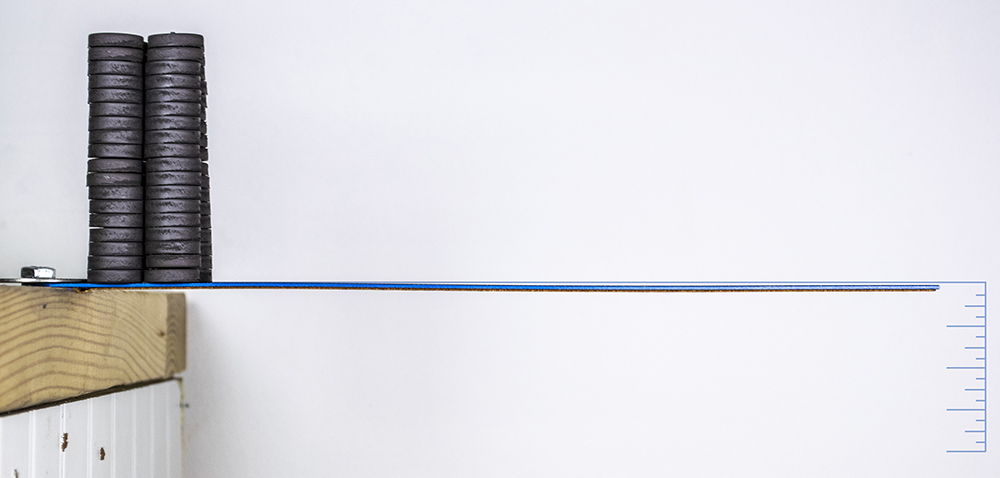
Placing a point load in nearest proximity to the fixed end of the support will have a greatly decreased max deflection. From the structural standpoint this is the safest place to apply a PL to a cantilevered support.
UDL - Entire Length

As illustrated above, a Uniform Distributed Load, at the same weight of the PL previously shown, distributed evenly over the entire length of the support will result in roughly ⅜ of the deflection of a PL at the free end.
Load Placement Comparison
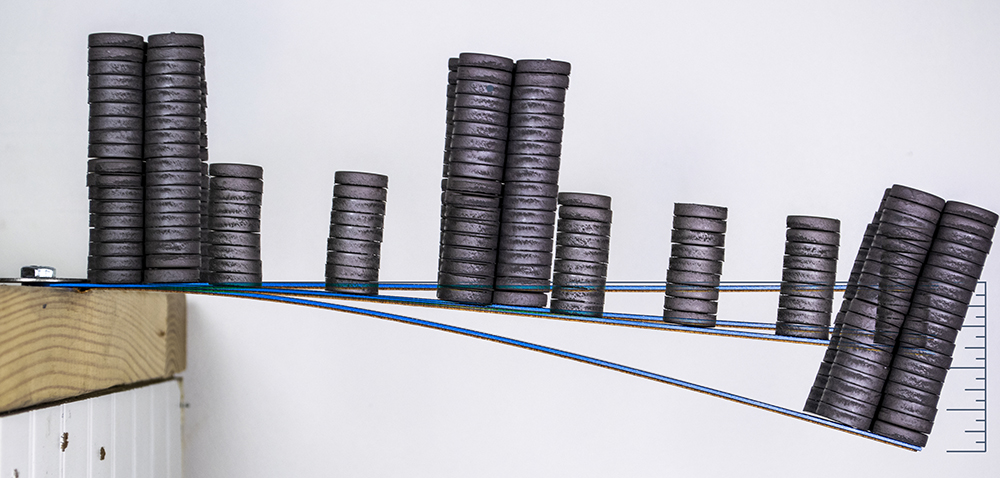
In developing braces and supports for holding up stone counters, workstations and other floated surfaces, we include testing of the carrying capacities of the braces to ensure they will effectively and securely support the necessary weight. To help our customers with their selection of braces for their projects, we reference the carrying capacities obtained through that testing. When referring to carry capacity for any Federal Brace product, it should be noted that the capacity is based on use with a uniform distributed load. To check out our products or view other helpful resources please visit FederalBrace.com
